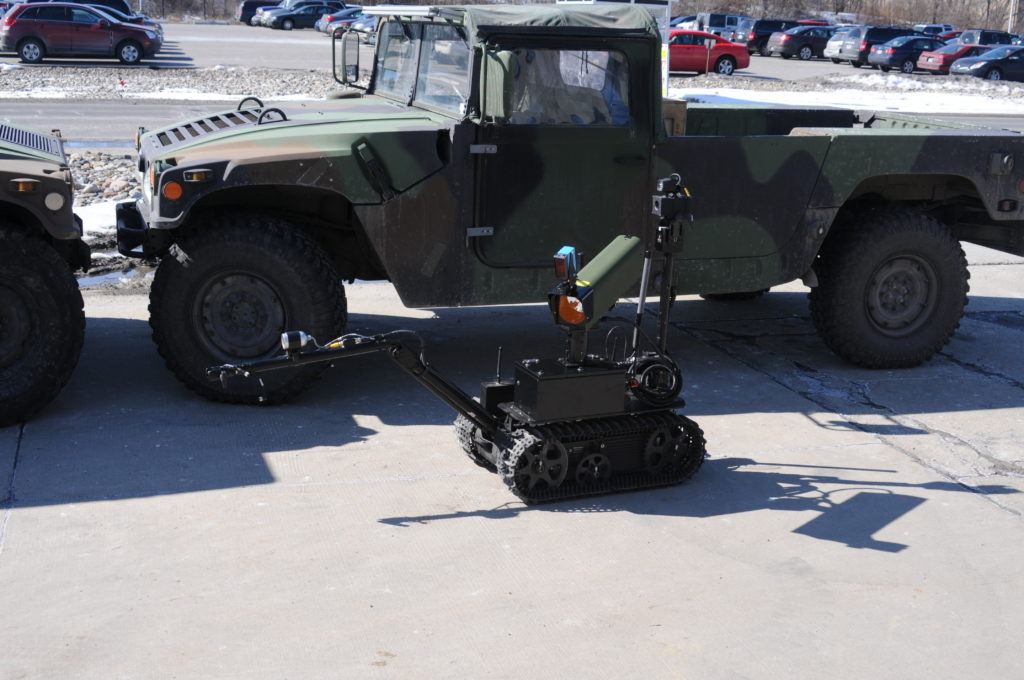Robotic Deep UV Standoff Sensors

Photon Systems has developed deep UV standoff CBE sensors that are robot-mounted. Using fluorescence and Raman bands, they enable rapid detection and classification of trace and bulk levels of chemical, biological and explosive contaminants on clothes, vehicles, packages, luggage and other surfaces or liquids. These sensors provide enhanced situational awareness for soldiers and first responders to potential nearby chemical, biological, and explosives (CBE) hazards with a standoff, robot-mounted, real-time, eye safe, in situ, solar blind, fully integrated sensor to detect trace to bulk concentrations of CBE hazards on surfaces at distances from 1 m to about 5 m. The fused deep UV Raman and fluorescence methods provide higher probability of detection with lower false alarm rates for a broader range of CBE materials than existing sensor detection methods.
The Gen 1.75 and Gen 2 family of sensors are fully integrated with visible aiming beam lasers, all electronics, computers, firmware, software and threat libraries. CBEs tested include: C4, Semtex, ANFOs, PETN, TNT, TATP, HMTD, Bacterial cells, spores and toxins.
Standoff excitation of suspicious packages, vehicles, persons, and other objects that may contain hazardous materials is accomplished using excitation in the deep UV where there are five primary advantages compared to near-UV, visible or near-IR counterparts. These are:
1) Excited between 220 and 250 nm, Raman emission occur within a fluorescence-free region of the spectrum, eliminating obscuration of weak Raman signals by fluorescence from target or surrounding materials.
2) Because Raman and fluorescence occupy separate spectral regions, detection can be done simultaneously, providing an orthogonal set of information to improve both sensitivity or limits of detection and provide lower false alarm rates.
3) Rayleigh law and resonance effects increase Raman signal strength and sensitivity of detection.
4) Penetration depth into target in the deep UV is short, providing spatial/spectral separation of a target material from its background or substrate.
5) Detection in the deep UV is solar blind and eliminates ambient light background and enables standoff detection during full daylight or artificial lighting conditions.
The Robot-Mounted Deep UV detector has eight key features which enable its capabilities:
1. The large aperture collector enables trace CBE detection of less than 100ng/cm2 of explosives at 3m.
2. The lightweight, rugged design weighs only 3Kg.
3. The 50mW, 532nm aiming laser is focused at 3m, and allows the operator to visualize the target area.
4. The on-board computer enables on-the-fly sensor training and realtime CBE analysis.
5. The compact and efficient deep UV laser enables simultaneous fluorescence and detection with only 10W input power.
6. Flexible power and communication allows operation on 20-60V input, with less than 20W total power draw and JAUS communication standard 3.0.
7. Rapid-mount for Talon/Packbot robots dovetail mounts without pin and operates on a Pan-Tilt mount (Talon).
8. Six solar blind detection channels for Raman and Fluorescence enables a wide dynamic range for trace and bulk detection.
